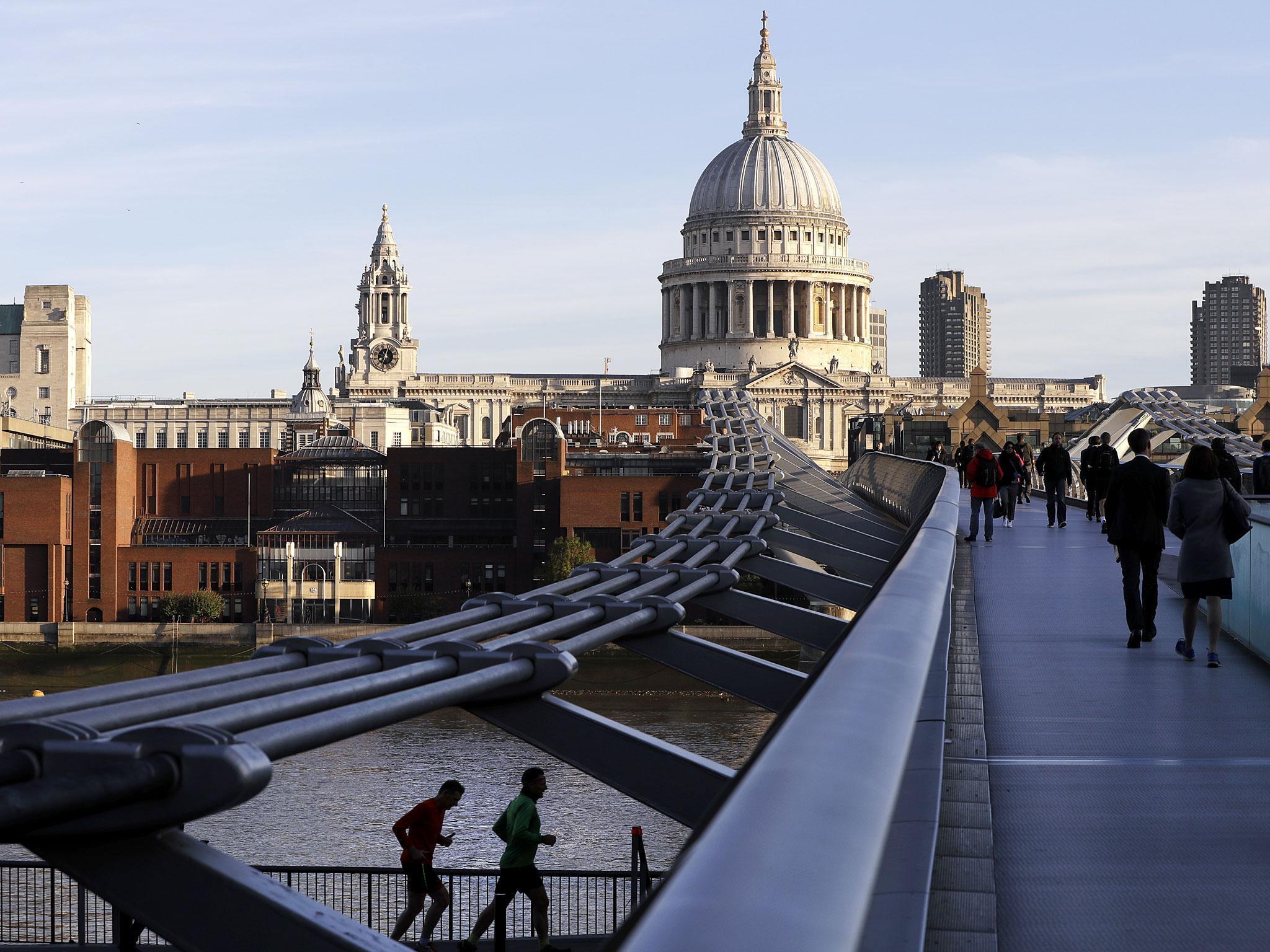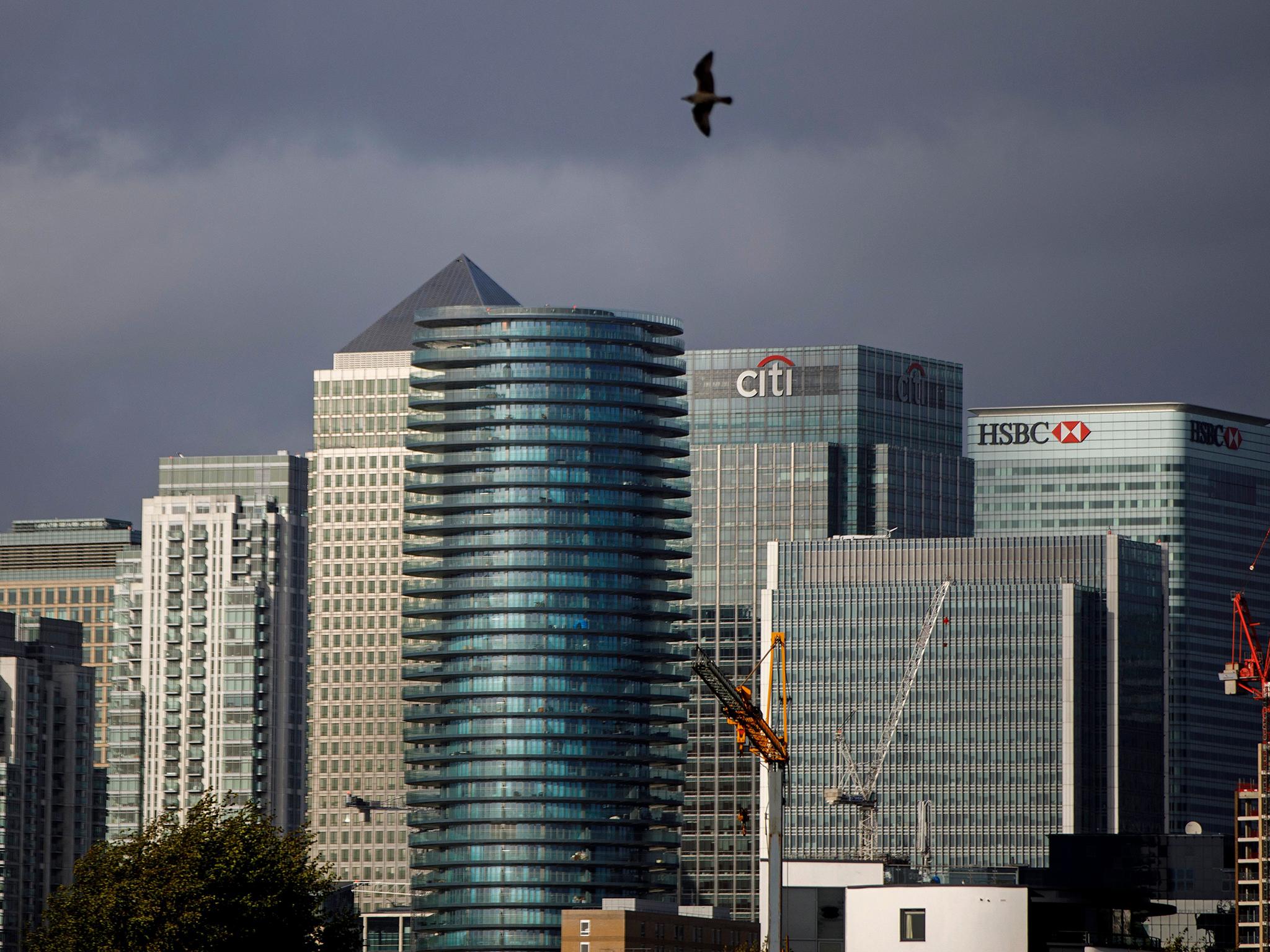To save our cities, we must let them breathe
Evolution is vital if a city is to enjoy lasting success; but, as Andreas Whittam Smith says, the endless construction of new skyscrapers is not necessarily evidence of positive change

Your support helps us to tell the story
From reproductive rights to climate change to Big Tech, The Independent is on the ground when the story is developing. Whether it's investigating the financials of Elon Musk's pro-Trump PAC or producing our latest documentary, 'The A Word', which shines a light on the American women fighting for reproductive rights, we know how important it is to parse out the facts from the messaging.
At such a critical moment in US history, we need reporters on the ground. Your donation allows us to keep sending journalists to speak to both sides of the story.
The Independent is trusted by Americans across the entire political spectrum. And unlike many other quality news outlets, we choose not to lock Americans out of our reporting and analysis with paywalls. We believe quality journalism should be available to everyone, paid for by those who can afford it.
Your support makes all the difference.On holiday some years ago, walking up Third Avenue on the Upper East Side of Manhattan in New York, I suddenly told myself that I really do love big cities. It felt like an epiphany moment, a realisation of something that had been implicit for a long time. After all, I had lived in London all my adult life without ever wishing to leave. I am proud of the place.
As a matter of fact, nobody would claim that Third Avenue is an attractive street. It is full of traffic. It has small shops at street level and very ordinary offices above. This is where a distinction that the French used to make between the ville and the cité comes in. This old usage indicated that the built environment, the ville, was one thing; how people dwell in it, the cité, was another.
It wasn’t that the people I passed that day in Third Avenue were having sparkling conversations with each other – quite the reverse. In the big city, unlike the small country town, passers-by rarely acknowledge each other. They are not expecting to say “hello”. Louis Wirth, an American sociologist, wrote that a city is a “motley mixture of peoples and cultures, of highly differentiated modes of life between which there often is only the faintest communication, the greatest indifference and the broadest toleration and occasionally bitter strife”.
So, what is it that makes a successful city?
We can get at this from various angles. The German adage from the late Middle Ages, Stadtluft macht frei (city air makes you free) emphasised that citizens no longer have to serve just one master. The travel writer Jonathan Raban has commented that cities, unlike villages and small towns, are plastic by nature. We mould them in our images: they in turn shape us by the resistance they offer when we try to impose our own personal form on them.
An essential sign of city life is the presence of crowds. But city crowds can become mobs. Richard Sennett, the urbanist, draws our attention to Gustave Le Bon (1841-1931), who wrote The Crowd: A Study of the Popular Mind in 1895. He believed that whenever large numbers of people gather, they can “together commit crimes they would never do alone”. In part this is explained by the simple fact that in the mass, people become anonymous. And psychologically, as a group swells in size, there is an exhilarating feeling of “us”, of release, of being free to do anything.
For the most recent example of riots in London we must go back no further than August 2011, when thousands of people ran amok following the death of Mark Duggan, who was fatally shot by the police in Tottenham. The protesters destroyed police vehicles, a double-decker bus and many homes and businesses. The disturbances, which spread to other towns and cities in England, lasted for a week.

Perhaps Jane Jacobs best put the requirements for a successful city in her book The Economy of Cities. This American author, journalist and urban activist said that the most successful cities are those that have more than one kind of success; and are continually able to reinvent themselves.
Let’s put London, Paris and New York to Jacobs’ tests.
More than one kind of success? London and New York have very similar achievements. They house the largest financial markets in the world, with New York bigger than London. In this activity Frankfurt is in ninth position and Paris very small. But Paris has a different strength. It is the world capital of fashion and haute couture, though it was an Englishman, Charles Frederick Worth, who in 1858 established the first haute couture house in Paris.
But here are their secondary successes. In the visual arts, all three cities are strong on a global scale. The National Gallery, the Louvre, the Metropolitan Museum: who could choose between them? Their collections are genuinely international and of the highest quality. A few weeks ago, for instance, a young visitor from Paris asked us if we would show him the National Gallery’s Rembrandts. Of course, I knew they would have some choice examples in Trafalgar Square – but I had forgotten that they had a whole gallery to themselves.

What about Jacobs’ second test? Not only must successful cities have more than one kind of success, they must also be able continually to reinvent themselves. This is more difficult to assess except in the case of London, where you have only to stand on, say, Westminster Bridge and look east towards the dome of St Paul’s to see reinvention going on all around. For St Paul’s is usually surrounded by tall building cranes.
As Deyan Sudjic, notes in his excellent book The Language of Cities, London is as fluid now as it has ever been. “Most of London, from Stratford in the east to Wandsworth 15 miles west, is caught in the path of an unstoppable juggernaut of redevelopment, fuelled by cheap money and the profits to be made in London’s property bubble.” Or Jonathan Raban again: “In London, everything is fresh; the ink is hardly dry on the reviews, and the latest thing in clothes still has the air of violent departure. This continuous freshness of the city composes most of what is left of the city’s power to persuade the immigrant that he has crossed the frontier into a new world.”
In contrast, Paris absolutely does not engage with reinvention and doesn’t wish to do so. It rigorously preserves unchanged the beautiful, satisfying city that lies within the inner ring road. It is largely 19th century, together with the old medieval street plan still visible on the Left Bank opposite Notre-Dame. In addition, there is a generous scattering of 17th and 18th-century town houses (hôtels particuliers) spread throughout the city.
Paris’s prohibition of contemporary architecture, except in small-scale in-fills, dates from the disaster of the Tour Montparnasse, the first and last skyscraper to be erected in central Paris. Built on top of a metro station in 1973, its 59 floors made it the tallest skyscraper in France. As a single tower jutting up from the Paris rooftops, it is undeniably ugly. It has given rise to the endlessly repeated joke that the tower offers the best views in the city because it is the only place from which you cannot see it. Two years after its completion, the construction of buildings over seven stories high in the city centre was banned.
In the end, however, lack of reinvention is dangerous. As the capital of a large, prosperous, advanced country, Paris will always have a major role. But the fate that awaits it – at least in my mind – is to become a Washington rather than a New York, or a Canberra rather than a Sydney. Or, as Sudjic argues, to become a large-scale version of Venice.
Equally, however, London is taking a risk by giving property developers free rein. Jane Jacobs called the sort of investments made by speculators and developers in league with architects and planners “cataclysmic money”, for they wreak havoc on communities with their big, sudden transformative projects – which all ultimately look the same. For the trouble is that developers work with simplified chunks of building. Because they seek finance on international markets, they need to be able to pitch the same package to bankers in London and New York and Tokyo.

Shopping malls or shopping centres are a good example. For instance, to pick two shopping centres I happen to know, the Metrocentre near Gateshead in the north-east of England closely resembles the shopping mall in the centre of Paris on the site of the old fresh food market, the Forum des Halles. In similar vein, Sudjic comments that Canary Wharf in London is an example of a simplified slice of a city.
You can find copies all over the world. It bears the same relationship to an authentic slice of city (which is necessarily complex, not simple) that a Starbucks does to a family owned Italian cafe. Or, as Sennett puts it: “Today the office park, the school campus, the residential tower set in a bit of green are not forms friendly to experiment, because all are self-contained rather than open to outside influences and interactions.”
Thank goodness, therefore, for campaigning by citizens. The officials running cities should never ignore the possibility that the people may be right. Look at Sheffield, where plans to cut down thousands of trees lining the city’s streets have engendered increasingly violent protest. Finally, two weeks ago, the local council announced an immediate pause in its controversial scheme.
“Save our cities” is a cry that resonates.
Join our commenting forum
Join thought-provoking conversations, follow other Independent readers and see their replies
Comments